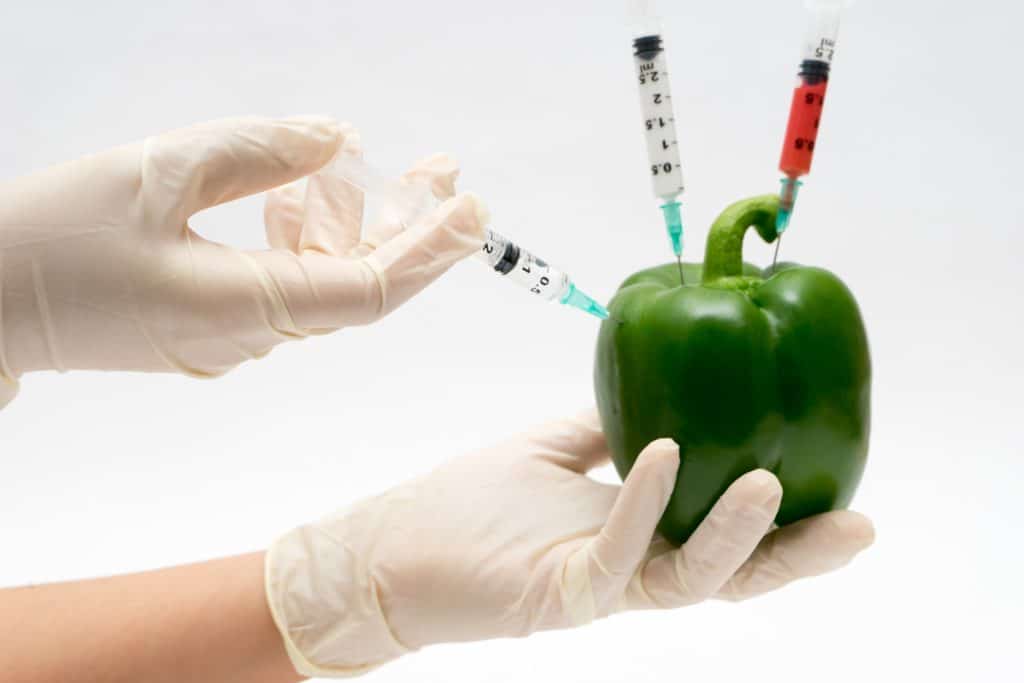Are GMOs dangerous? This is a question that has been debated for many years. Some people say they are, while others claim they are perfectly safe. This post will explore the truth about GMOs and discuss the pros and cons of using them in food production. We will also look at the latest scientific research on the topic to better understand the risks involved with GMOs. So if you have ever wondered if GMOs are dangerous, read on to find out more.
Contents
- 1 What Are GMOs?
- 2 The History Of GMOs
- 3 Why Use GMOs?: The Positive Benefits
- 4 Create A Longer Shelf Life
- 5 Ability To Grow In More Climates
- 6 Enhance The Flavor And Nutrition Of Food
- 7 The Truth About GMOs: The Downsides
- 8 Allergies
- 9 Affecting The Insect Population
- 10 Risk Of Cancer
- 11 Understand The Truth About GMOs!
What Are GMOs?

GMO stands for “genetically modified organism.” A GMO is any living thing whose DNA has been altered in a laboratory. GMOs are often created by adding genes from one species into the DNA of another species. For example, scientists might add the gene for herbicide resistance into the DNA of a crop plant. The resulting plant would then withstand herbicides that would kill other plants. GMOs can also be created through “gene editing,” which involves making precise changes to an organism’s DNA.
While GMOs have been used in agriculture for decades, they have only recently become commercially available. Today, many crops sold in supermarkets, including corn, soybeans, and cotton, are GMOs. Some people believe that GMOs are unsafe and should be banned. Others argue that GMOs can help to improve crop yields and reduce the use of pesticides. The debate over GMOs is likely to continue for many years to come.
The History Of GMOs

The history of GMOs is a long and complicated one. The term “GMO” itself is relatively new, only coming into common usage in the 1990s. But the science behind GMOs dates back much further. In the early days of genetics, scientists began experimenting with ways to transfer genes from one organism to another. This process, known as genetic engineering, was first used on plants in the 1970s.
Since then, GMOs have been created for a variety of purposes, from increasing crop yields to creating new medicines. Today, GMOs are present in many common foods, including soybeans, corn, and canola oil. They are also used in livestock feed and some vaccines. While the use of GMOs is controversial, there is no doubt that they have revolutionized agriculture and medicine.
Why Use GMOs?: The Positive Benefits

While there are many people who oppose the use of GMOs, there are also many who support it. Before looking at some of the negatives around GMOs, it is first important to understand why they are used. Here are a few of the benefits:
Create A Longer Shelf Life
One of the most common arguments in favor of genetically modified foods is that they can help to reduce food waste. By engineering crops to be more resistant to disease and pests, farmers can reduce losses due to crop damage. In addition, by increasing the shelf life of fruits and vegetables, GMOs can help to keep food fresh for longer. As a result, less food is thrown away due to spoilage.
While some consumers are wary of the health risks associated with GMOs, the potential benefits of reducing food waste are hard to ignore. Given the enormous amount of food wasted each year, anything that can help reduce losses is worth considering.
Ability To Grow In More Climates
Another huge benefit to GMOs is they can give foods the ability to grow in more climates and resist pests and diseases. For example, a GMO tomato could be created by adding the genes from a cold-tolerant fish to the tomato plant. As a result, the tomato plant could withstand colder temperatures. This would be a huge benefit to farmers in colder climates who are struggling to grow crops.
In addition, by engineering crops to be resistant to pests and diseases, GMOs can help to reduce the need for pesticides. This is good for the environment and the health of farm workers who are often exposed to harmful chemicals.
Enhance The Flavor And Nutrition Of Food
While there are some downsides, a big upside about genetically modified organisms is that they can enhance the flavor and nutrition of food. For example, by introducing a gene from a sweeter variety of corn, scientists have created a sweeter and more nutritionally dense form of corn. In addition, GMOs can be used to create new types of fruits and vegetables that are more nutritious and flavorful. As the world population grows, GMOs will play an increasingly important role in meeting healthy and delicious food demand.
And there is no greater example than golden rice, which has been modified to have high levels of beta-carotene. Golden rice is important because it has the potential to reduce vitamin A deficiency, which is a leading cause of blindness in developing countries.
The Truth About GMOs: The Downsides

As beneficial as GMOs can be, some downsides need to be considered. While many companies would rather you believe that GMOs are completely safe, the truth is that there is still a lot of research that needs to be done. Here are a few of the potential risks associated with GMOs:
Allergies
Creating GMOs can introduce new allergens into the food supply, which can trigger allergies in susceptible people. Additionally, GMOs may alter the structure of carbohydrates and other nutrients in ways that make them more allergenic. For example, a study in mice found that a genetically modified form of rice caused an immune reaction that led to intestinal damage and allergic reactions.
While more research is needed to understand the full effects of GMOs on human health, it is clear that they have the potential to cause allergies and other adverse reactions. As such, people with allergies need to be aware of the potential risks before consuming any foods that contain GMOs.
Affecting The Insect Population
The development of genetically modified crops has led to a significant decline in the population of many insect species. GMOs are plants engineered to contain genes from other organisms, such as bacteria or viruses. These genes confer resistance to herbicides or pests, allowing farmers to spray their crops without fear of damaging them. However, the same properties that make GMOs resistant to herbicides and pests also make them deadly to insects. When insects eat GMO plants, they are poisoned and die. This has profoundly impacted the abundance and diversity of many insect species.
In some cases, entire populations have been wiped out. The decline of insect populations can have ripple effects throughout the food chain, as insect-eating animals are left without a food source. Additionally, insects play an important role in pollinating many plant species. As their numbers decline, so does plants’ ability to reproduce. The negative impacts of GMOs on the insect population are widespread and far-reaching. They threaten the survival of specific species and the health of entire ecosystems.
Risk Of Cancer
While the debate over genetically modified organisms (GMOs) continues, new research reveals potential risks associated with these altered crops. One study, for example, found that rats fed a diet of GMOs developed significantly more tumors than those not exposed to GMOs. The long-term effects of consuming GMOs are not yet known, but this study suggests that there may be a connection between GMO consumption and cancer risk.
Other research has shown that some pesticides used on GMO crops can also increase cancer risk. For example, glyphosate, the active ingredient in Roundup, has been classified as a “probable human carcinogen” by the World Health Organization. While more research is needed to confirm the link between GMOs and cancer, these studies suggest that there may be a reason for concern.
Understand The Truth About GMOs!
GMOs have the potential to offer many benefits, but some risks need to be considered. Allergies, cancer, and the decline of insect populations are just a few of the potential problems associated with GMOs. While more research is needed to understand the full extent of these risks, it is clear that GMOs are not without their dangers. Therefore, before consuming any foods that contain GMOs, it is important to be aware of the potential risks.


